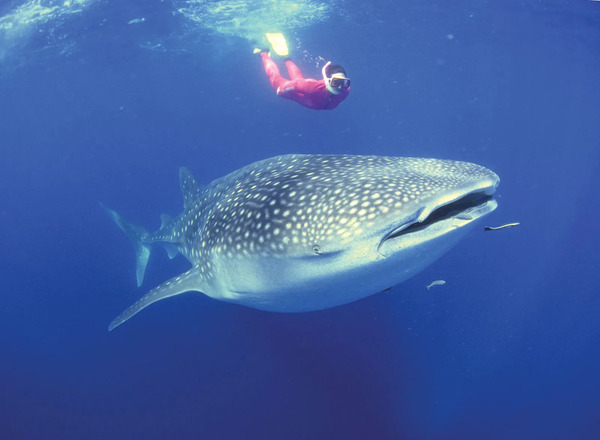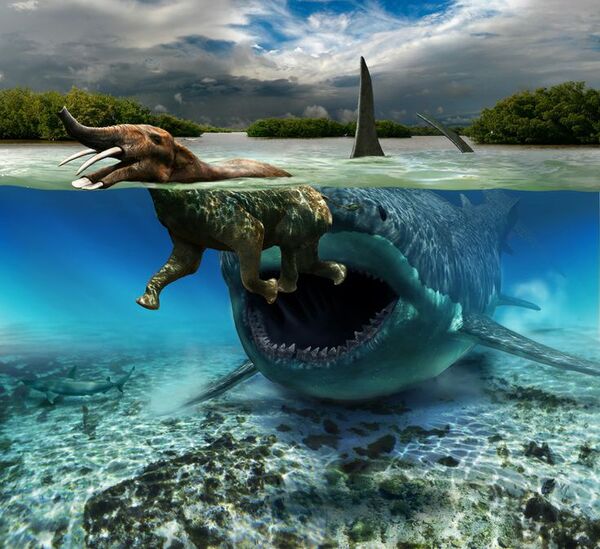Sharks have long captured the imagination of people worldwide, not only because of their fearsome reputation but also due to their massive size and prehistoric history. Among all the species of sharks that roam our oceans today, the question often arises: what is the largest shark ever? In this article, we will explore the largest sharks to have ever lived, focusing on both present-day species and the ancient, extinct sharks that once roamed the seas.
When it comes to the largest shark in the world today, the title is held by the whale shark (Rhincodon typus). This gentle giant is truly a marvel of the ocean, and it holds the record as the largest living fish species in the world. Let’s dive into some fascinating details about the whale shark and other contenders for the largest shark ever.

Scientific Name: Rhincodon typus
Size: Can grow up to 40 feet (12 meters) or more. The largest verified specimen recorded was a staggering 61.7 feet (18.8 meters) long, though most whale sharks are typically between 30 to 40 feet.
Weight: Whale sharks can weigh as much as 20.6 metric tons (45,000 pounds).
Habitat: Found in tropical and warm temperate oceans around the world, particularly in coastal areas.
Diet: Unlike many other sharks, whale sharks are filter feeders. They feed on plankton, krill, and small fish, swimming with their mouths wide open to filter their food.
Conservation Status: Whale sharks are classified as Endangered due to threats such as fishing, ship strikes, and habitat destruction.
The whale shark is a filter feeder, meaning it feeds by swimming with its mouth open, filtering out plankton, krill, and other tiny organisms. Despite their enormous size, they are not a threat to humans, and they are often considered to be one of the most docile creatures in the ocean.
Whale sharks grow to such colossal sizes due to their feeding habits. As filter feeders, they spend a great deal of time in the nutrient-rich waters near the surface, constantly filtering plankton and small fish out of the water. This abundance of food allows them to grow large while expending relatively little energy in hunting, unlike the predatory sharks that rely on catching live prey.
While the whale shark is the largest living shark, the megalodon (Carcharocles megalodon) holds the title of the largest shark to ever exist. This prehistoric behemoth roamed the oceans millions of years ago, and estimates of its size are nothing short of extraordinary.

Scientific Name: Carcharocles megalodon
Size: Estimates suggest that megalodons grew up to 60-70 feet (18-21 meters) long, with some theories even suggesting they could have reached lengths of up to 82 feet (25 meters).
Weight: A fully grown megalodon likely weighed around 50-70 metric tons (110,000-150,000 pounds).
Habitat: Megalodon lived in warm, shallow seas around the world during the Cenozoic Era (roughly 16-2.6 million years ago).
Diet: As one of the largest predators ever to exist, megalodons preyed on large marine mammals, including whales, seals, and large fish.
The megatoothed giant grew to such an enormous size due to the abundance of large prey available to it, including whales, dolphins, and large fish species. It had an extremely powerful bite, capable of exerting a pressure of up to 18 tons per bite. While the megalodon went extinct around 2.6 million years ago, its size and strength still haunt the imagination of many shark enthusiasts today.

Since the megalodon went extinct long before humans came onto the scene, scientists rely on fossil evidence to estimate its size. The most significant clue comes from the megalodon’s teeth, which can grow up to 7 inches (18 cm) long. By studying the size of these teeth and comparing them to those of modern sharks, scientists have been able to estimate the size and weight of the megalodon.
While the whale shark and megalodon are the most famous when it comes to large sharks, there are several other species of sharks that have also reached impressive sizes. Let’s look at some of the other contenders:
Scientific Name: Cetorhinus maximus
Size: Can grow up to 40 feet (12 meters).
Diet: Like the whale shark, basking sharks are filter feeders, primarily consuming plankton.
Conservation Status: Basking sharks are considered Vulnerable due to their slow reproduction rate and fishing pressures.
Scientific Name: Carcharodon carcharias
Size: The largest recorded great white shark measured 20 feet (6 meters) long, but they typically grow up to 15-16 feet (4.5-5 meters).
Weight: Great white sharks can weigh up to 2.5 tons (5,000 pounds).
Diet: Great white sharks are apex predators, feeding on seals, dolphins, and large fish.
Conservation Status: Great white sharks are listed as Vulnerable by the International Union for Conservation of Nature (IUCN).
Scientific Name: Galeocerdo cuvier
Size: Tiger sharks can grow up to 16 feet (5 meters).
Diet: Known for their diverse diet, tiger sharks will eat almost anything, from fish to birds, sea turtles, and even garbage.
Conservation Status: Tiger sharks are considered Near Threatened, with a population decline due to overfishing.
The size of a shark is influenced by several factors, including food availability, environmental conditions, and evolutionary advantages. For species like the whale shark, growing large allows them to filter a significant amount of water, providing them with a steady source of food. On the other hand, predatory sharks like the megalodon grew large to capture large prey, with the physical strength to overpower their targets.
The largest shark ever recorded, the whale shark, is a true marvel of the ocean, reaching lengths of up to 60 feet and surviving on a diet of plankton. However, the megalodon, a long-extinct giant shark, was likely even larger, with estimates suggesting it reached up to 82 feet in length.
Today, sharks continue to fascinate us with their immense size and power. From the gentle, plankton-eating whale shark to the fearsome great white shark, these incredible creatures continue to rule the oceans. Whether alive today or long extinct, sharks have carved their place in history as some of the most magnificent and formidable creatures ever to swim the seas.
By understanding the history and biology of these incredible animals, we can better appreciate their role in maintaining the health of our oceans and the need for conservation efforts to protect them.
animal tags: sharks
We created this article in conjunction with AI technology, then made sure it was fact-checked and edited by a Animals Top editor.